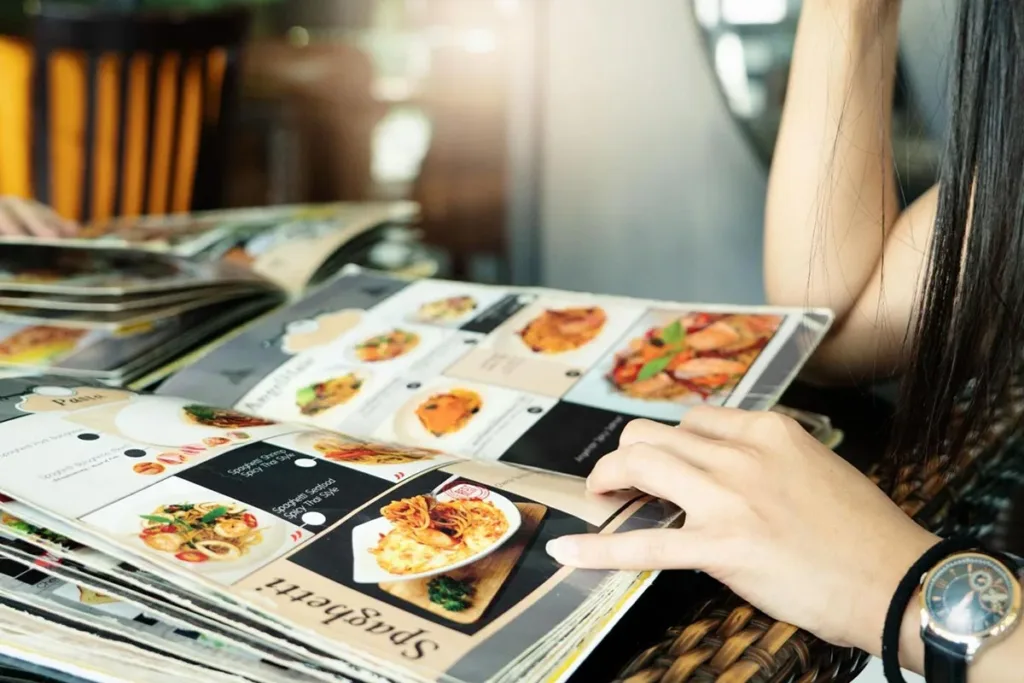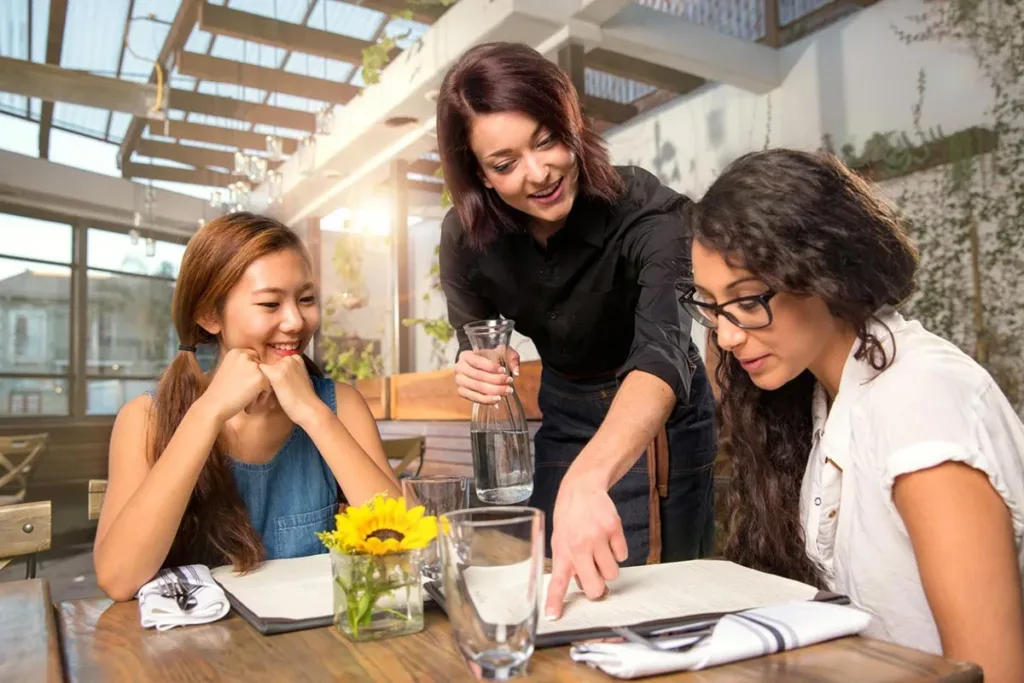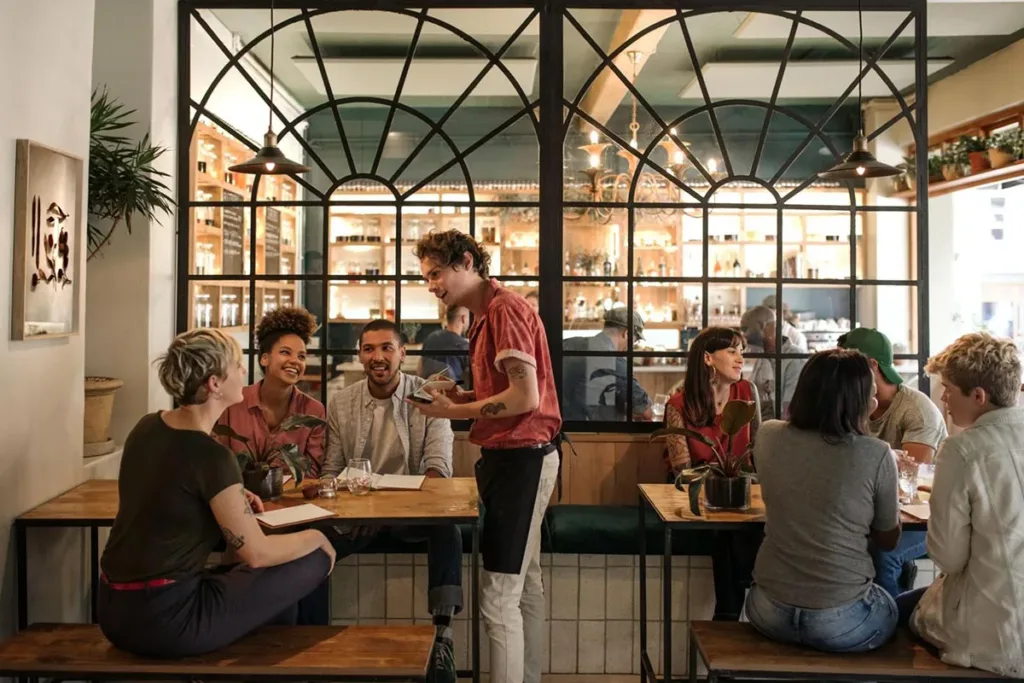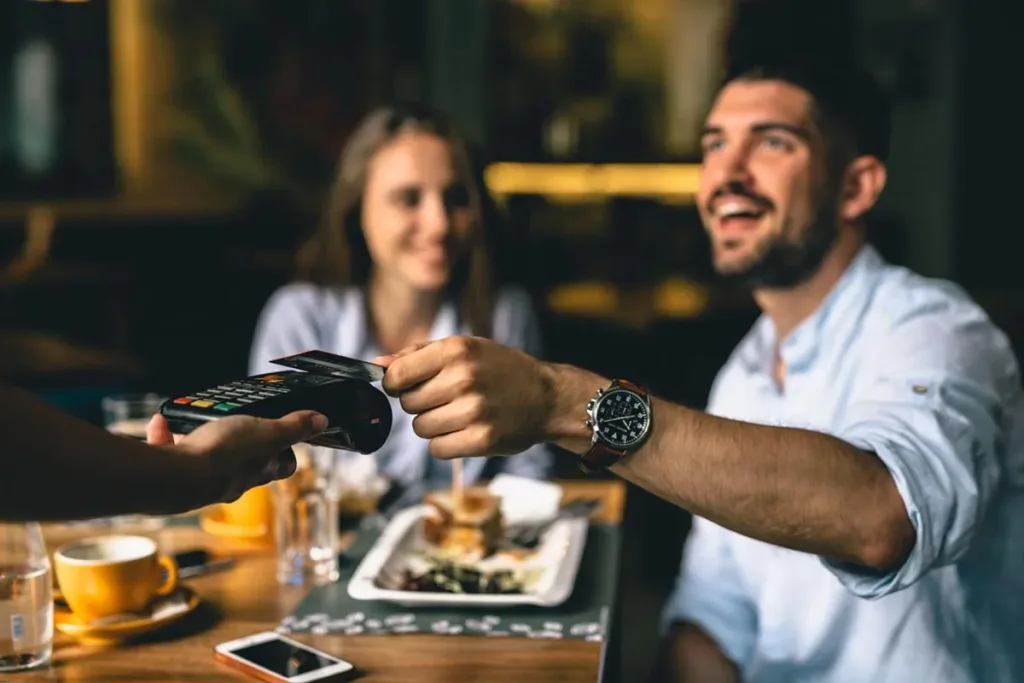Excel at all 7 stages of the restaurant customer journey
Skip the article and turn takeaways into action by scheduling a call with our team.
Restaurant owners who aim to understand their customers will want to have a complete understanding of the restaurant customer journey. After all, customers don’t magically fall into restaurant seats—many stages are involved in the customer experience, from the first moment their curiosity is piqued to the actual meal, to when they pay their tab and walk out the door with (hopefully) full bellies, right up until they decide whether they’d like to make repeat visits.
Knowing customers’ expectations and their pain points will help you improve the dining experience and will lead to more successful marketing campaigns and, ultimately, greater profitability. It’s a good idea to create a mental customer journey map (or a visual representation), which can help with improving customer retention.
Let’s check out the seven touchpoints in a restaurant customer journey and delve into ways restaurant owners can improve their performance at each stage.
turning new customers into loyal ones, and building a solid customer base and repeat visits.
Stage 1: Awareness

The crucial first step for a restaurant is simply to get noticed by customers. This step is challenging in a crowded marketplace, where restaurants have to compete for new customers with limited marketing budgets.
First impressions start long before customers walk in the door. So how do you stand out?
- Leverage social media marketing. Develop consistent social media branding across multiple platforms, post frequently, engage your audience, work with local influencers, and continually strive to grow your brand.
- Optimize your online presence with restaurant search engine optimization (SEO) and business pages. Aim to stand out for the specific search terms related to your restaurant, and consistently update your restaurant website to snag would-be customers’ attention. Ensure your Google My Business profile is complete, with all details like your phone number, address, and hours, and make your menu easily accessible online.
- Nail down your presence on review sites like Yelp. Frequently post photos and engage with reviews, and consider advertising.
- Make your restaurant signage easily visible, your exterior attractive and clean, and your concept clear. Leave a menu outside for potential customers to browse.
- Create a unique selling proposition, e.g., signature dishes, your ambiance, or sustainability.
Whatever makes a new customer stop and consider your restaurant as a dining option is your friend at this stage. Track your brand mentions on social media, and monitor your website traffic and other social media engagement to see what’s effective in your marketing strategy.
Stage 2: Consideration

The challenge in the second stage is to get new customers to go beyond mere curiosity to real interest. What would make customers choose your restaurant over a competitor?
Restaurants need to give potential customers a reason to pick them beyond just price. Some tactics at this stage:
- Showcase menu items with visuals and provide clear pricing to demonstrate to customers what they can expect.
- Offer a glimpse of the dining experience at your restaurant and some intimate details, e.g., photos of the decor, your chef’s story, or other personal touches that humanize your business.
- Provide incentives like first-time visitor discounts, loyalty program rewards, or specials.
Monitor review sites to get real customer feedback, and track click-through rates on ads to see what’s working in your advertising.
Stage 3 (online version): Online ordering
For many restaurants, online ordering isn’t just a side hustle—it’s a lifeline for reaching customers who otherwise would never step through the door. Meeting the demand for fast, reliable takeout and delivery while maintaining quality and serving in-person diners presents a real challenge.
These strategies can make online ordering a viable part of your restaurant’s business:
- Integrate a seamless online ordering system via your restaurant website, third-party delivery apps, or social media messaging.
- Ensure menu clarity with vivid descriptions, photos, and customization options.
- Coordinate kitchen workflows to prioritize both in-person and takeout or delivery orders.
Tracking online order volume, delivery times, and order accuracy rates can all help improve the delivery and takeout business. Pay especially close attention to online reviews from this customer base since restaurants have far less control over the online guest experience.
Stage 3 (in-person version): Booking
Restaurant owners who can streamline the reservation process to reduce friction will be rewarded with a boost in their reservations. A smooth booking process is the first critical moment in the restaurant customer journey.
To make booking easy, restaurant owners can:
- Implement a user-friendly online booking system, e.g., the system in Yelp Guest Manager.
- Offer multiple options for booking: phone, website, mobile apps like Yelp, or via Booking Links on social media.
- Manage peak times with waitlist options like an online waitlist management app.
Restaurateurs focused on this stage will want to pay special attention to reservation platform analytics and no-show rates.
Stage 4: Arrival

New customers had an idea about what to expect from your restaurant before they showed up, but now they get to see the real deal in person. The moment they step in the door, they’re judging everything whether they realize it or not—so make it count.
To create a positive customer experience, restaurants will want to:
- Train staff to offer warm greetings and provide efficient seating.
- Keep both the interior and exterior of the restaurant clean and inviting.
- Handle wait times gracefully, e.g., with clear communication, complimentary appetizers, and comfortable seating.
Restaurants can look to tech solutions for handling seating and juggling wait times like Yelp Kiosk, which clearly communicates wait times to customers and supports front-of-house (FOH) staff. Restaurant owners looking for metrics at this stage can focus on customer feedback about the arrival experience and online reviews that mention staff performance.
Stage 5: Dining

Dining is the most central part of customer satisfaction. Here’s where customer loyalty is won or lost—you can do everything else flawlessly, but if you don’t get the food right, it’s all a lost cause. So it makes sense that a restaurant owner would want to dedicate a large part of their focus to this stage, where the majority of a customer’s memorable experiences will come from.
Books have been written about strategies to improve the dining experience. However, to summarize, the following are the most vital points of focus:
- Ensure food quality through kitchen oversight. Clearly defined roles and responsibilities all the way up the chain of command ensure accountability and keep clear goals top of mind for all.
- Maintain good relationships with suppliers, and keep in touch with what’s in season in the marketplace. A restaurant’s food is only as good as its ingredients, and the freshest food will generally win.
- Train FOH staff to read customer cues and handle special requests, and have plans for how to deal with a wide range of anticipated customer behavior.
- Create an ambiance that enhances the meal, e.g., with lighting, music, and comfortable seating.
- Design a menu that goes beyond a simple list of menu items. Highlighting certain specialty items, vivid descriptions, and photos can all help upsell or draw customers’ attention to items you want to sell. Menu engineering is a science and can boost sales as well as customer satisfaction.
- Serve food that’s unique, or simply better than competitors’ food. Many restaurants sell pizza, but if you sell the best pizza in town, word of mouth can do much of your marketing for you.
There are many, many metrics that restaurant owners can use to track the dining experience stage in the restaurant customer journey. A few examples are table turnover rates, customer satisfaction surveys, food cost analysis, longitudinal sales data, and average customer spend..
Stage 6: Departure

Ending the guest experience on a high note can leave a lasting impression in customers’ minds and encourage them to return. A great goodbye can turn a one-time diner into a regular.
Some strategies to improve the departure stage:
- Streamline your payment process system, e.g., by providing quick service and having tableside credit card payments and contactless options.
- Offer a small parting gift, like a loyalty card or a simple piece of candy or a mint.
- Personalize farewells by thanking customers by name.
- Offer to sign a customer up for a loyalty program app or an email marketing list, noting valuable offers and discounts for those who opt in.
Systems like Yelp Guest Manager can create customer profiles that help track when customers make repeat visits—the more repeats, the better news it is for the restaurant. Restaurateurs can also pay attention to tip percentages to see how their farewell process is working.
Stage 7: Post-visit

Restaurants that stay in their guests’ minds after a visit stand a good chance of having repeat customers. The customer journey doesn’t end at the door, after all—it’s about cultivating customer loyalty by bringing the guest back again and again.
A few strategies to keep a restaurant in a customer’s thoughts post-visit:
- Encourage reviews, and be sure to respond to all feedback, both positive and negative.
- Send follow-up emails with promotions, events, or information about new menu items, or even just send a thank-you note.
- Engage on social media with customer-tagged posts or by offering contests (think photo or caption contests).
Tools to track your post-visit engagement include review scores, email open rates, and social media follower growth. Naturally, counting your repeat customers will also indicate your level of success at the post-visit stage as well.
The right tools to improve the restaurant customer journey
From the first moment a customer hears of you to the moment they’re walking out the door, your restaurant is being judged. Making sure each interaction is smooth and pleasant is as much a path to success as wowing customers with delicious food and drinks. Understanding your customers’ expectations and their pain points will provide deep insight into the people who keep your business profitable.
Some restaurant tools cover many aspects of the customer journey and can make a restaurateur’s job easier. Take Yelp Guest Manager, for example. It can make for smooth sailing for much of the restaurant customer journey, from booking all the way to departure. Easy reservations, painless waitlists, customizable table management, and frictionless syncing with POS systems—it’s all there.
Pairing with Yelp also leads to more customers being aware of your restaurant in the first place: Guest Manager restaurants that add Yelp Ads experience up to an 17% monthly lift in diner bookings through Yelp.
So if you’re looking to improve all aspects of the restaurant customer journey, start with upgrading your software. Reach out to us for a free demo to see what it’s all about.
Fill out the form to get the Restaurant Customer Journey Template
"*" indicates required fields